|
We reached out to our festival filmmakers to ask them questions about the experience of making their films.
What inspired this story?
We had been researching possible story ideas and wildlife related issues for a couple of years in the Ladakh region. We were also placing camera traps trying to get evidence of some of the Top predators in the Himalayas, primarily Brown Bears, Wolves, Lynx and the Snow Leopard. In a landscape that has almost no natural borders and little to no cover for wildlife to move through it was especially intriguing when we found that the wolves and snow leopards had adapted to humans and were comfortable being around villages. The shy reclusive persona of a snow leopard didn't seem too true anymore. Being in Ladakh one quickly realises how fragile the mountains are and how difficult surviving them can be. Casual conversations with the locals would often lead to stories of how the climate has changed and how it doesn’t even snow some years. This was the trigger… a Snow Leopard with no Snow. We dove in deeper and found there were multiple issues that threaten this region and it’s wildlife. Were there any surprising or meaningful experiences you want to share? An amazing experience was to spend a night in a hide waiting to film a snow leopard with her cubs on a kill. At some point before dawn a pack of wolves came down, ran past the hide and fought the snow leopard off her kill. From an almost complete silence with only the sounds of snapping bones to a flurry of of angry Growls, snarling and snapping.. and then all quite again. This was the first time we had witnessed any interaction between snow leopards and wolves but unfortunately with no IR gear on location we couldn’t film it. Meeting with many villagers who feared wolves and snow leopards less and packs of Feral dogs more was both surprising and extremely worrying at the same time. Feral dogs remain a huge and largely unaddressed problem in India. The seriousness of this issue can’t be overstated and right now there don’t seem to be any solutions offered. Filming India's highest landfill was a shock. We expected it to be awful but the we were completely unprepared for the scale of the problem. Seeing disposable plastic water bottles also held a mirror to our own faces. What impact do you hope this film will have? We hope this film triggers some action in managing the Feral dog situation across India. There are reports of dogs killing wildlife everyday and little is being done about it. No management of garbage is another issue which is again not being dealt with across the Mountain states of India. Lack of infrastructure and political will has led to some of the highest landfills in the world. We hope the film shocks the people in power into action and really start making some hard decisions and fixing something which we shouldn’t have broken in the first place. It would be amazing if the films start conversation on these issues and actually translate them into action. It would be amazing if manufacturers of products with disposable packaging like water, aerated drinks etc stood up and took responsibility in fixing this.
What drove you as a filmmaker to focus on big cats?
Big Cats are a real symbol of the landscapes they live in. If a Big Cat chooses to live in a forest or on a particular mountain it reassures us that most things are right and as they should be there. We also felt that an environmental / conservation story told with the cat at the centre would hold the audiences attention and help paint the big picture.
0 Comments
We reached out to our festival filmmakers to ask them questions about the experience of making their films.
What inspired this story? Some 10 years ago a villager, whose farm was close to a tiger reserve in Central India, had told me that if you want to film tigers you should come to my farm instead of trying to find a needle in a haystack in the reserve. I was intrigued and explored this story of tigers outside the reserves for many years before I decided to make a film on it. Were there any surprising or meaningful experiences you want to share? I saw many positives in the conservation of tigers by individual’s vision and dedication. I met intrepid low level forest staff, walking to track the tigers 24X7 which in itself is a life risk business. What impact do you hope this film will have? There is little consciousness and information about the tigers who live outside the reserves. Even their numbers are not fully known. This film has already sparked an interest and an inquiry in the media and among the lay audience. Describe some of the challenges faced while making this film. Since tracking tigers outside is a task fret with uncertainties and risks of no protection and no information and infrastructure, it was always a road to adventure. For the first time we captured the secret lives of tigers on night vision camera outside any reserve. With villagers for our guides we would track a tiger on a cattle hunt, sit by it to film our tigers, etc. Sometimes the tigers would be close by growling to warn us and alert us of its presence!
We reached out to our festival filmmakers to ask them questions about the experience of making their films.
What inspired this story? The story of the film is based on a true love of a ranger to a protected area that he is responsible to protect. Describe some of the challenges faced while making this film. In was more than 40 years, there was no evidence of a persisting Persian leopard in the area. Then the ranger verified the species with his insisting. What impact do you hope this film will have? The most important effect of the movie is on Halvani, who is the ranger and has true love the protected area. Anything else you would like people to know? Our team, especially the cameramen, spent a lot of time with the ranger. We partnered in this big event. At first, he was very shy in front of the camera and he adapted after a long time. The main story of the movie was a big challenge too because if we could not document the leopard, the movie would fail. What next? We will spend some part of the movie's income to conserve the protected area and with other part we will buy some facilities to improve our equipment to produce our next documentary movie.
We reached out to our festival filmmakers to ask them questions about the experience of making their films.
What inspired this story?
When dealing with tigers it’s expected that they will be at the forefront of any film. We wanted to do something different. We wanted to show the personal story of those people who are at the forefront of protecting this magnificent species. They are often the forgotten heroes. They do their work out of passion and commitment. In the case of Singye, we found one of only 2 female rangers in Bhutan who was leading a group of 30 men in the forests of Royal Manus National Park. She regularly leaves her home and family to spend weeks in the park – facing threats from not only poachers but also heavily armed militants. She had the obvious respect of her whole team. She was at once kind and generous but as tough as nails if she needed to be. Her passion for tigers even though she has never actually seen one in the wild before.
What impact do you hope this film will have?
The film was released to coincide with WWF’s network push to raise awareness of the plight of tigers across the 13 different tiger range states. WWF aims to double tiger numbers in the wild by 2022. We hope to see this film having impact in a number of ways – it should act as a tool for WWF to push home the message to governments that tigers need greater protection from the numerous threats they face. It also has the parallel purpose of demonstrating the dedication of those individuals whose job it is to protect tigers. We hope that by showing this passion and commitment more people will be inspired to put pressure on their policy makers at home to ramp up tiger conservation.
the park, the challenges of actually filming sequences became apparent as movement through the park involved daily treks through the forest accompanied by armed guards at all times – not only from the threat of poachers and militants but also of course, from tigers. On one infamous occasion we also found out we had accidentally crossed over into India and were confronted by an elite unit of the Indian army – quite a surprise on both sides!
What drove you as a filmmaker to focus on big cats? Big cats are by their vary nature exotic and beautiful but this has also meant they are incredibly vulnerable in today’s modern world. Habitat destruction and encroachment, alongside the threat of poaching has driven big cats, especially the tiger, to the brink. Mega fauna like tigers are not only impressive species in themselves but also emblematic of the wdier state of nature – if they are under threat, then often their environment and other species that live there are also under threat. By focusing on big cats and the rangers that protect them we hoped to shine a brighter light on the issues surrounding tigers and increase pressure on policy makers to ensure that they get the protection they deserve.
We reached out to our festival filmmakers to ask them questions about the experience of making their films.
Answers provided by Lara Ariffin.
What inspired this story? We are losing tigers in Malaysia - today there are less than 250 in the wild and not enough is being done to save them by the authorities. In my generation, Malaysia has lost the Sumatran Rhino and the leatherback turtle and we refuse for the tiger to also disappear on our watch. As a company, we have decided to work on short films on a pro-bono basis that will engage a particular community or target audience. We decided that Harimau Selamnya, (Tigers Forever), will be made for Muslim villagers living close to the forest that are could be involved in poaching and hunting of tigers. Were there any surprising or meaningful experiences you want to share? Getting His Royal Highness Sultan Mizan on board this project was a wonderful surprise. Quiet by nature, he was camera shy but pushed his own boundaries by putting himself out there. As the head of Islam in the state of Terengganu, his word makes a big impact to the people of the state. What impact do you hope this film will have? The film has already been crucial in helping to get a fatwa, or religious edict, passed in the state - banning the hunting of tigers and threatened wildlife. The film has also been shown in mosques around the state and the message used in Friday prayer sermons. We have been able to get it shown on local television as a filler. We hope to continue our efforts of spreading awareness to other Muslim villagers in other states. Describe some of the challenges faced while making this film. One of the biggest challenges is keeping the message as simple as possible for the target audience. As the film is completely on a pro-bono basis, we are restricted by the number of days we can put into the film. What drove you as a filmmaker to focus on big cats? The tiger is the jungles most elusive but most formidable creature but humans have brought it to its knees - from more than 3,000 in Malaysia in the 1950’s, there are now less than 250. Never has the plight to save them been so desperate and urgent.
We reached out to our festival filmmakers to ask them questions about the experience of making their films.
Answers provided by Hannah Hoare, Showrunner
What inspired the story? Following the pride and filming the cubs, it quickly became apparent that one cub was different. He was always on his own, off to one side, not joining in with play-fights. We were really drawn to him from the word go, the little underdog – the Misfit. We focused on him and just watched all the drama unfold. We could never have predicted his incredible story. Share about your surprising or meaningful experiences during filming? The night we found the tiny Misfit lost and alone, away from his pride, was heart-breaking. He came so close to being attacked by a leopard it was almost unbearable to film. The crew’s hearts were in their mouths. Even more remarkable was seeing the reaction of his teenager brothers when he finally found them. At first we were hugely relieved that’d he’d found the safety of the pride, but quickly realized how wrong we were. It was an extraordinary insight into lion behavior, and an emotional rollercoaster.
What impact do you hope the film will have? We’ve been able to show that lions are far more nuanced than just being formidable predators and I hope perhaps that might help some people see them in a different light. Their family relationships are complex and intriguing; what befalls one has an impact on another. Lions need wildernesses in which to live out their lives and it’s up to us, to humanity, to ensure we protect those places. The more people who engage emotionally with lions, the more they are likely to commit, I hope, to protecting their world. What challenges did you face while making the film? Filming at night is very tricky. The crew were at a huge disadvantage compared to lions – their night vision is seven times better than ours. Our thermal camera made it possible for us to film – but we had no way of seeing what was going on either side of the camera, or behind us. We had some nerve-wrackingly close encounters with some very big cats! What drove you as a filmmaker to focus on big cat species? There’s a fascination with the wild version of the moggy that lives in our houses. But lions are unique, the only social cat. Multiple animals maintaining relationships means there are always compelling stories to be told. Following a pride over time is like getting hooked a soap opera – you get to know characters and you want to tune in and find out what happens next. For a film-maker, there’s a rich vein of stories.
We reached out to our festival filmmakers to ask them questions about the experience of making their films.
What inspired this story?
I have seen and filmed jaguars in Brazil on previous projects and was in awe of them. But was searching for a story that encapsulated the real-world threats and challenges the cats face, not just a situation to showcase their amazing behaviour. Contacts in Brazil told me of the pioneering approach to habituate and study wild jaguars that was being used in Southern Pantanal by the Oncafari Project. The work is based on models that have proved successful in habituating big cats to vehicles in Africa, and the team were using the same techniques and expertise to get wild jaguars accustomed to vehicles in Caiman Ecological Refuge. I visited the project to investigate it further and was there when the team learnt about the plight of the two orphans jaguars. A female jaguar had entered the town of Corumba with her two cubs during the flood season and sadly died during an attempt to move her. The local authorities managed to capture the two cubs that were then held in a rescue facility. They looked destined to a life in captivity. But the Brazilian Department of the Environment – ICMBio - approached the Oncafari project to see if they would attempt to re-wild and release the cubs in the Southern Pantanal region. It gave us a brilliant opportunity to tell two parallel and juxtaposing story lines – on one hand a pioneering approach to get closer to the wild jaguars for the benefit of science and eco-tourism, and on the other trying to make the orphans wild and wary of humans, and pioneer an approach to releasing captive cats to the wild. Describe some of the challenges faced while making this film. Following individual wild jaguars – even those that are becoming habituated to vehicles – proved challenging and very time consuming. The star wild cat we followed was a female called Esperanca, who had cubs during our filming period. We knew that she was pregnant on the first filming trip but despite the team's best efforts we only caught sight of her new cubs four months later. She proved to be a very diligent mother and it was clear she was completely in control of the interactions we had with her. She only revealed the cubs strictly on her terms when the time was right for them. The orphaned cubs in the purpose built enclosure also proved tricky to film as they became more elusive as they grew more wary of humans. To film them hunting we installed remote cameras during the construction of the enclosure. The camera system sat dormant for eight months and had to endure a Pantanal wet season. But it survived and provided us with a clear view of how the orphans were learning to hunt and that they were ready to be released. What impact do you hope this film will have? Beyond the need for conservation of jaguars in particular, I hope this film will make people think about the pressures and future faced by Brazil's wildlife and wild places at this very critical time in the country's history. Jaguars are Brazil's conservation icon and a symbol of its wildest places. They hold the top slot in a country that is the most bio-diverse on the planet. The survival of Brazil's jaguars has to been seen in relation to the demands of Brazil's growing urban population and the very real threats to its protected areas. Industries such as cattle farming, agriculture and tourism are stake holders, not just in the future of jaguars but in so much of the country's wildlife, and the conservation effort needs to engage on all fronts if we are to safe guard the future of Brazil's wildlife. Were there any surprising or meaningful experiences you want to share? The story of the orphans took on a great poignancy for a number of us on the production during the filming. The jaguars' story is all about mothers – Esperanca, the wild female we followed, was a remarkable mother and we saw how well she taught her two cubs. It showed how reliant jaguar cubs are on the mother to learn to hunt and survive, and made the loss suffered by the two orphans at such a young age even more apparent and stark. But we also felt their loss on a much deeper level. During filming not only did Lilian, our key Oncafari contributor, lose her mother, but I lost my mother to cancer as did our production coordinator, Emily. It was very brave of Lili to talk about her loss during interviews as her loss was very recent and raw – and while she was talking about her loss she was speaking for us all. Anything else you would like people to know? Since we finished filming the two orphaned sisters have continued to adapt well to their new life in the wild. They have been monitored by the Oncafari team and have remained in the area where they were released – which is a well protected and safe territory free from persecution. On the basis of this success and the lessons learnt there are future plans to develop similar release programs in other biomes in Brazil.
We reached out to our festival filmmakers to ask them questions about the experience of making their films.
What inspired this story?
Tigers have always caught people's imagination. They are one of the biggest and most powerful cats and a symbol of India’s ecological abundance. A tigers presence in a forest proves that the forest is healthy. For the past few years tiger numbers have risen in India in the wild. The forest of Ranthambhore has especially seen a high rise in tiger numbers. We were filming in Ranthambhore when Sultan suddenly vanished. He was supposed to be the next dominant male in the area where we were filming most. A young healthy tiger disappearing was a really bad sign. We started to follow his tracks and also understand the complex relationship tigers and people share in and around Ranthambhore National Park. The park earns high earnings from tourism. It's one of the most visited National Parks in the country. Yet in the last 5 years 12 tigers have gone missing from Ranthambhore. We needed to understand where these missing tigers go? Do they get killed, poached or poisoned? What we found was incredible! Tigers of Ranthambhore were sometimes walking even up to 300 kilometeres in search of prey and new habitat! This gave us and the filming crew hope. Sultan may not have been poisoned or poached. He could have just walked out of the safety pf the park in search of food and new territory. This is how our journey began to follow Sultan and tell the story of missing tigers of Ranthambhore. Were there any surprising or meaningful experiences you want to share? The two most meaningful experiences in this journey were to witness the work of the village volunteers at the ground level and the change in the Moghiya community. The village volunteers are volunteers from the community of shepherds who live around Ranthambhore. They understand the terrain the best and also understand the nuances among the people who share their habitat with the Tiger. The team of people we met, monitor and track tigers of Ranthambhore who leave the protected borders of the National Park and walk through natural corridors that are now agricultural fields or peoples homes. To see and meet people from the community who have become guardians of the Tiger is really an experience that makes you understand the science and hard work needed behind protecting one of India’s most loved yet endangered animal. The Moghiya community was the other experience which was very meaningful for the crew. The Moghiyas are one of the poorest and most marginalised communities in the area. They have been out castes for centuries and have survived on hunting. Identified as poachers and criminals, the new generation of Moghiya children are going to school and learning to leave the ancient traditions of hunting behind. To meet Jaggu and his family gave everyone a sense of immense hope that things can change if the right interventions are put in place.
What impact do you hope this film will have?
We hope that Sultans story becomes an example of what Tigers and other big migrating species are going through across the country. Animals know no boundaries and walk their ancient routes to fend for themselves and their family. Policy makers and decision makers must understand that these ancient corridors must be protected and Tigers must be given these connected safe corridors to be able to breed and maintain their populations. We hope that after this film, Kaila Devi Sanctuary is given National Park Status and is included in the Ranthambhore Tiger Reserve with safe corridors connecting them. This would ensure the increasing populations ofTigers in Ranthambhore to live and breed further and also decrease the unavoidable human-animal conflicts in the area. Describe some of the challenges faced while making this film. We went back looking for Sultan during the monsoons. Everything was flooded and pug marks were difficult to find. Camera trapping was the only way to know which way Sultan might have gone. Parts of Kaila Devi where we wanted to look were completed flooded and inaccessible. This made us lose hope on a daily basis. Other than the film had the support of both the Forest Department and Tiger Watch who were as invested in Sultans story as we were. It was important for them to find this Tiger and prove that a missing tiger did not just mean that it was poached…it meant a tiger had just walked hundreds of kilometres outside of the forest. This is what Tigers do and this must be understood. What drove you as a filmmaker to focus on big cats? Big Cats are a symbol of a healthy forest. At a time when forests across the world are being lost, it is important to tell a story which connects the cats to the forests and finally the forests to every viewer watching the film. India's forests are now reduced to less than 30% of its historic cover. The Big Cats and all the other species dependent on them are disappearing with the forests. Telling the story of a big cat is telling the story of the forests and the habitat they need to sustain them. We feel the Tiger story which has been told so many times can never be told enough. Now might be the time more urgent than ever to celebrate Big Cats and their importance for the ecology that they sustain, the few biodiversity hotspots that remain and the forests that still provide water for the millions.
We reached out to our festival filmmakers to ask them questions about the experience of making their films.
What inspired this story? We want to tell the stories of the people who share the landscapes with snow leopard. This is the story of a Cashmere goat herder who works at very high altitudes in harsh conditions tending his goats. In the past, because of the value of his goats if a snow leopard kills one a goat, there would be retaliatory killing of the cat. Now through a Livestock Insurance Program, he has options and no longer kill snow leopards. Were there any surprising or meaningful experiences you want to share? In the Village of Gya, they knew the film crew was coming. Both the women and the men working in the streets moving rocks and digging ditches until our vehicles arrived. They walked to a community hall to meet us. Bringing out their finest teacups, they served yak butter tea and gave thanks to each of us by draping a ceremonial scarf around our necks. They were so grateful that we would be sharing their story. What impact do you hope this film will have? With knowledge you can create empathy and support. To bring the stories from both the communities and the people who are doing the conservation work, I hope this film garners more worldwide support for the Snow Leopard Trust and their partners. Describe some of the challenges faced while making this film.
What drove you as a filmmaker to focus on the big cat species? I was hired to produce a video featuring the Snow Leopard Trust founder Helen Freeman in 2004. Initially, it was to showcase her work as the founder of the Snow Leopard Trust. I was able to use donated footage from Mitchell Kelly and Hugh Miles and fell in love with snow leopards. October of 2018, I got to witness my first snow leopard in the wild. It was a thrill of a lifetime.
We reached out to our festival filmmakers to ask them questions about the experience of making their films.
What inspired this story? Early in his career, Irish Cameraman Colin Stafford-Johnson spent almost 600 days filming Broken Tail & his family in Ranthambhore India’s most magnificent tiger reserve for a series of the finest tiger documentaries ever made. Broken Tail was the most charismatic tiger cub he'd ever seen and Colin filmed him almost daily throughout the first year of his life. But then Broken Tail disappeared without trace leaving a host of unanswered questions. Colin returned home to Ireland but Broken Tail’s disappearance continued to haunt him. Years later when he heard of a tiger matching Broken Tail’s description killed by a train hundreds of miles from the reserve, Colin felt he owed it to Broken Tail to find out what happened, retrace his last journey and discover just how he’d managed to survive outside the safety of a reserve. Were there any surprising or meaningful experiences you want to share? The team launched into the film expecting it to be a tale of woe for tigers. Our aim was to highlight the issues, reveal the habitat destruction and show the problems facing tigers in the hope that things might change. What we found was something often very different. Broken Tail left the safety of Ranthambhore Reserve and wandered for 200 miles through often densely populated countryside. He was no lurking fugitive but relaxed and confident among people and was able to thrive with ease among an extremely tolerant rural population in Western India. He wandered and on his journey found corridors and areas of land that could support him and other tigers. Until he came to his final sanctuary – a place called Darrah and settled here, he was not a tiger in trouble.
Describe some of the challenges faced while making this film.
The biggest challenge in making Broken Tail was getting funders to back it. Conservation films are always a very difficult sell to mainstream broadcasters, but a tiger conservation film that centred around an already dead tiger was an incredibly difficult sell. In the end, we took quite unconventional funding routes for a Natural History film and thankfully once it was made, all of the leading broadcasters came on board. In the field the biggest challenge for the production was Indian bureaucracy. At the time of filming there was a lot of tension in India about the state of the tiger population. The level of work involved in obtaining permissions required to film in protected areas was enormous and the rules and procedures changed regularly. This slowed the production down substantially and also meant that we had to keep our shooting plan very flexible.
What drove you as a filmmaker to focus on big cats?
I think there are a few iconic species that every natural history film maker would like to make a film about in their career and Tigers is one of them. For years producers John Murray & Cepa Giblin had been trying to find a tiger story, but were adamant that they didn’t want to make just another tiger profile documentary. With international headlines on a daily basis about the dwindling tiger numbers in India, they wanted a strong conservation film with a powerful emotional story at its heart, a film that might make a difference in some way. So, it was a chance meeting with Colin Stafford-Johnson that brought this idea. Through Broken Tail’s story they could see the complexities of the issues facing tigers and a means to bring them to an audience through the remarkable story of one individual tiger. |
Archives
March 2024
Categories
All
|
Contact UsJackson Wild
240 S. Glenwood, Suite 102 PO Box 3940 Jackson, WY 83001 307-200-3286 info@jacksonwild.org |

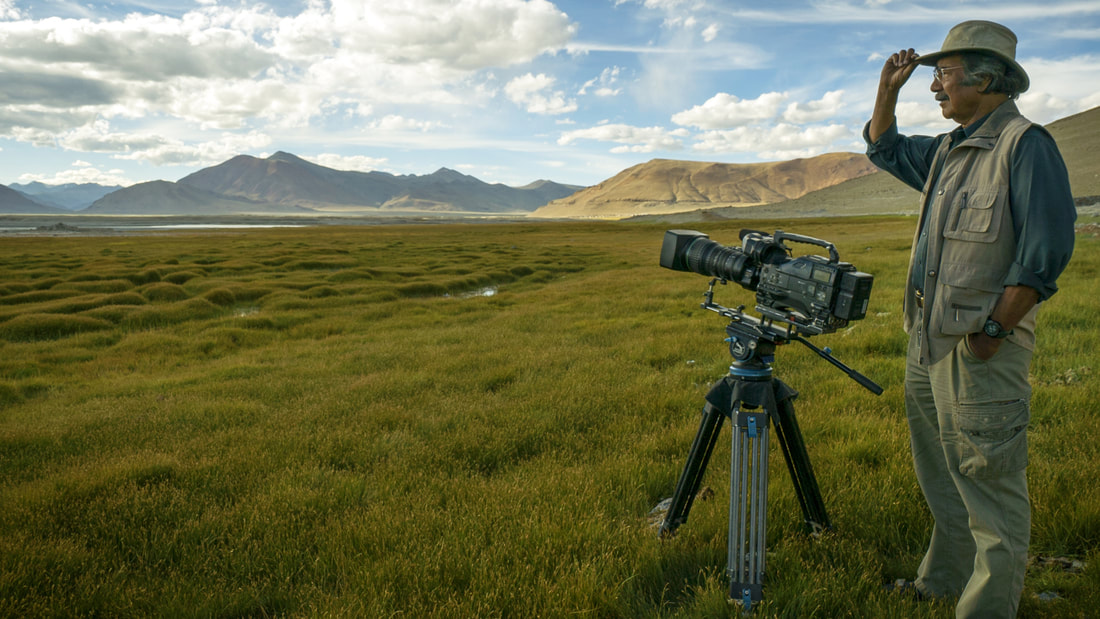
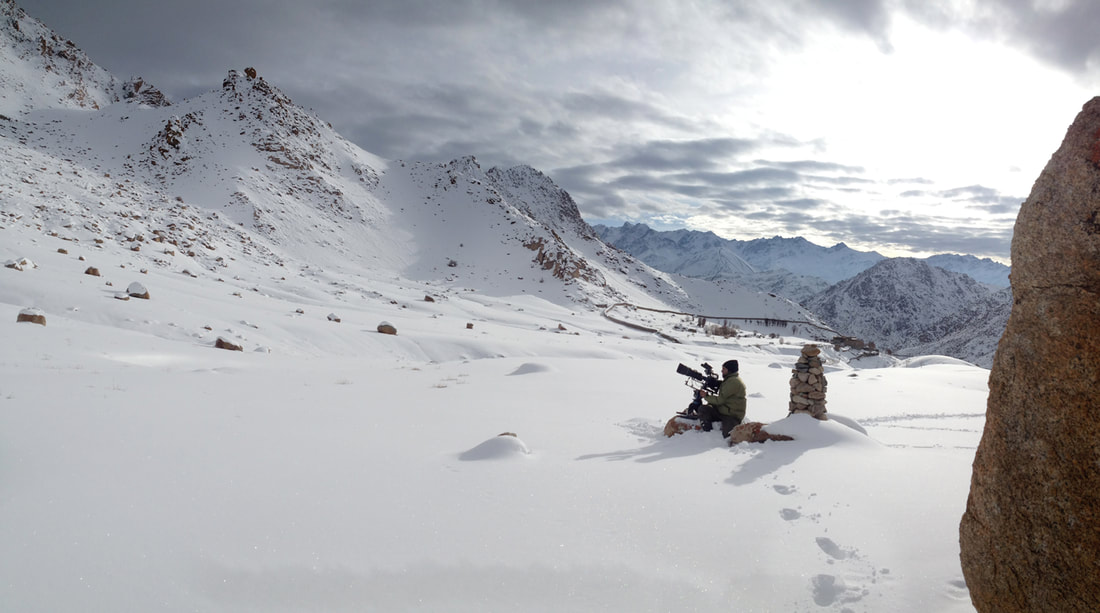
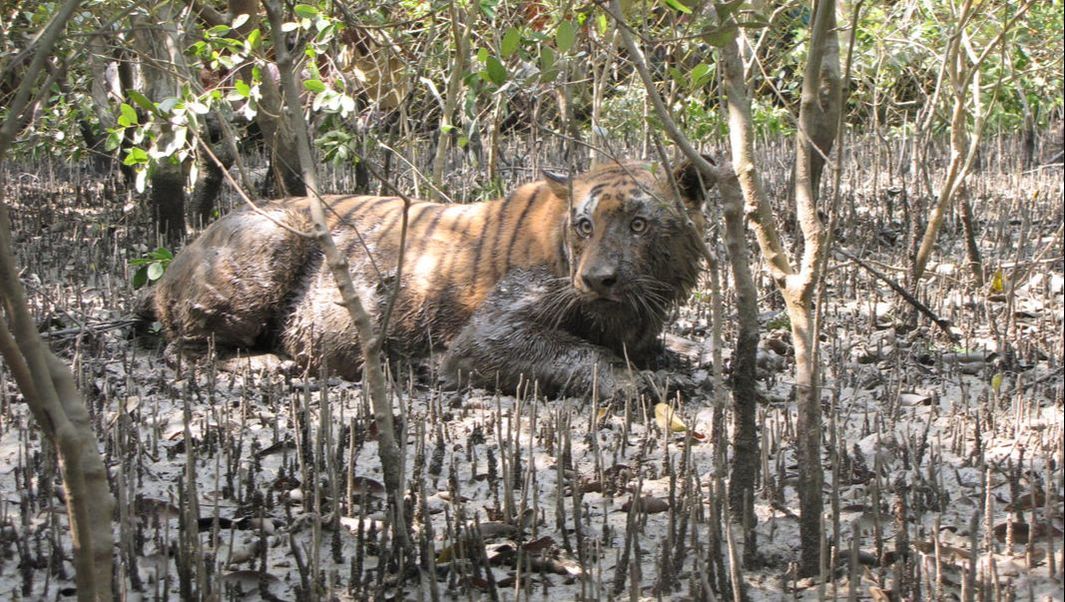
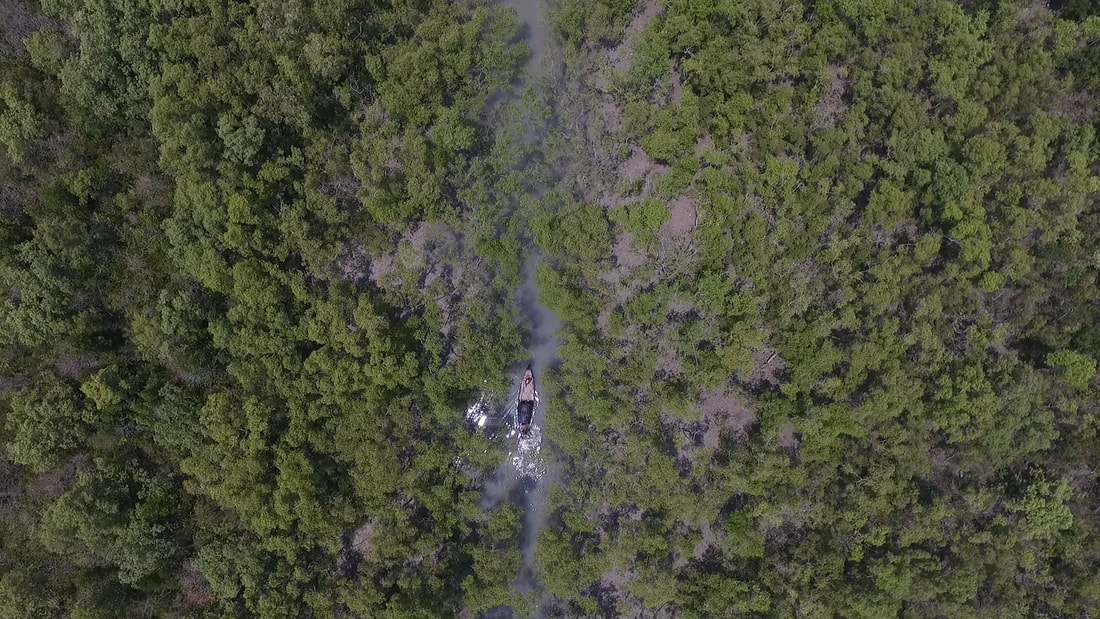
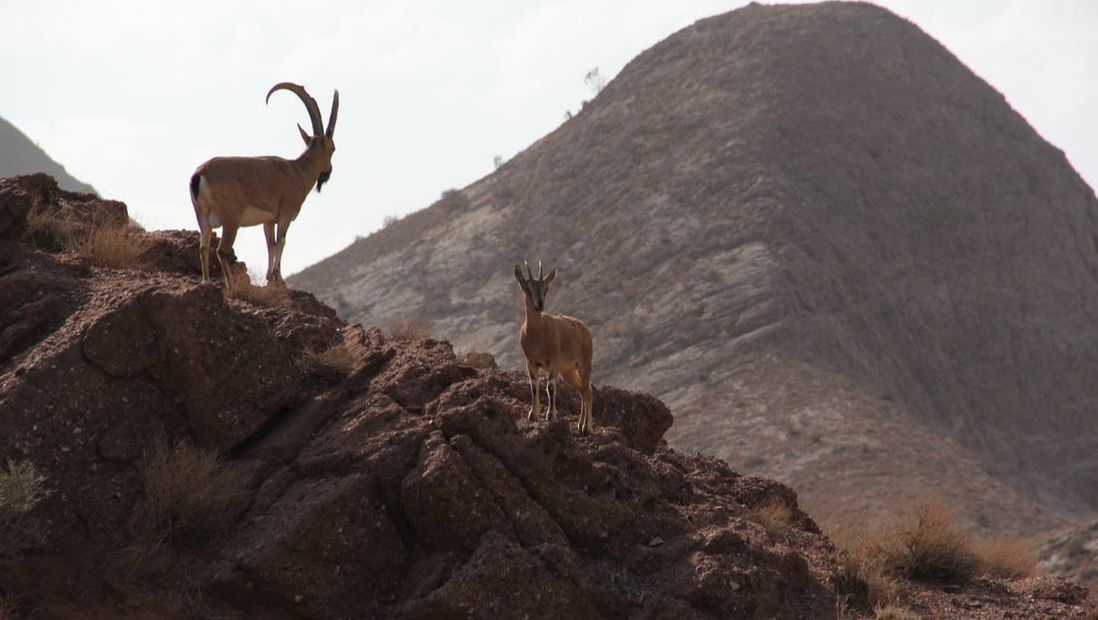
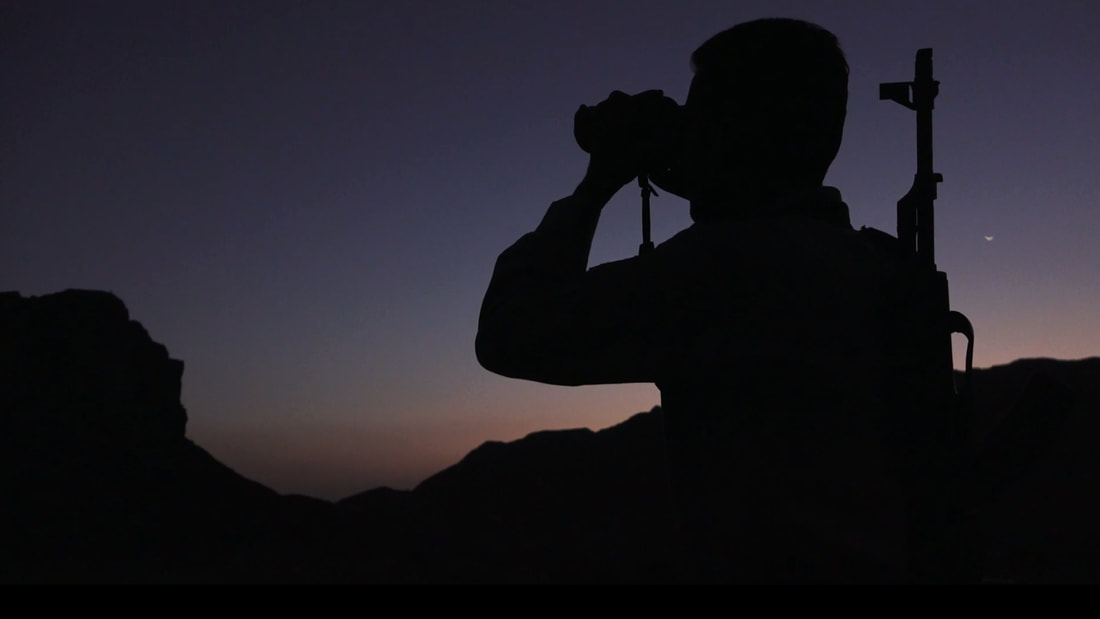
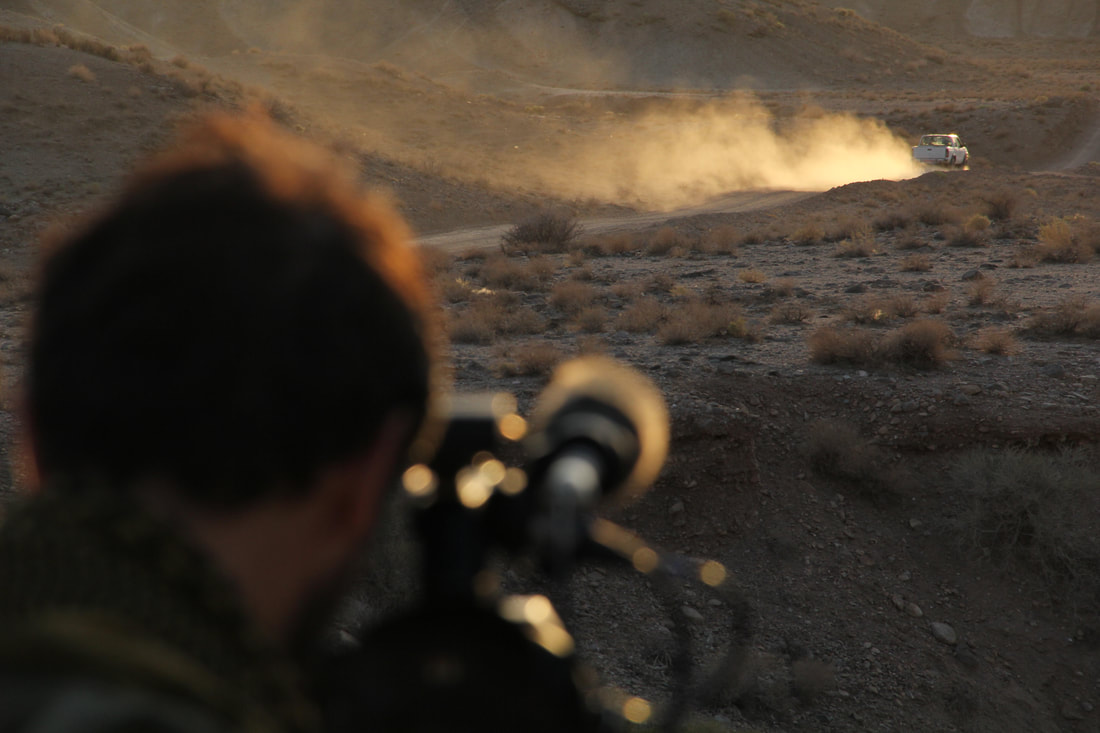
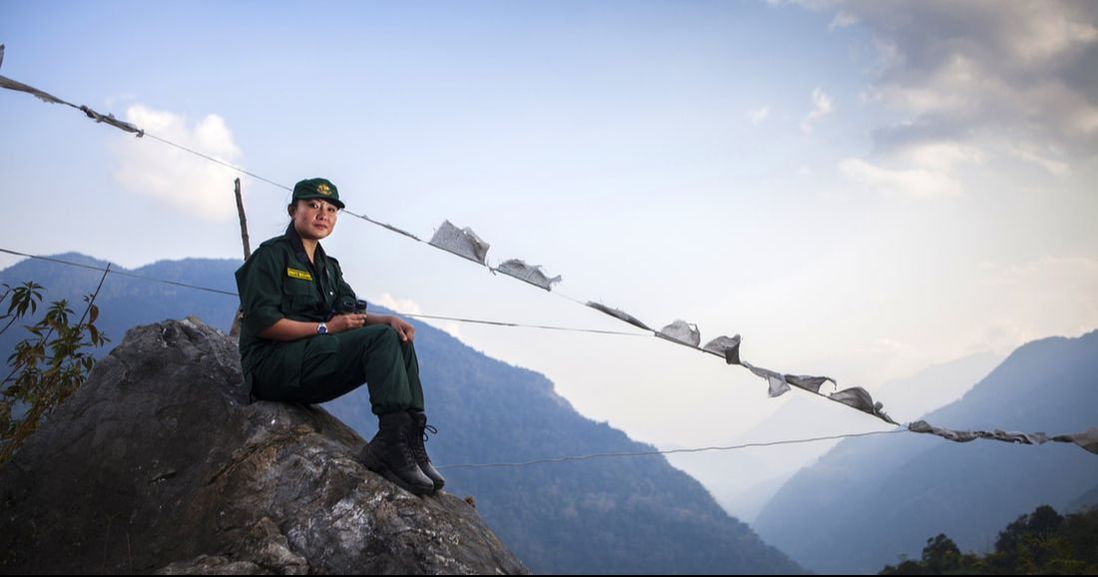
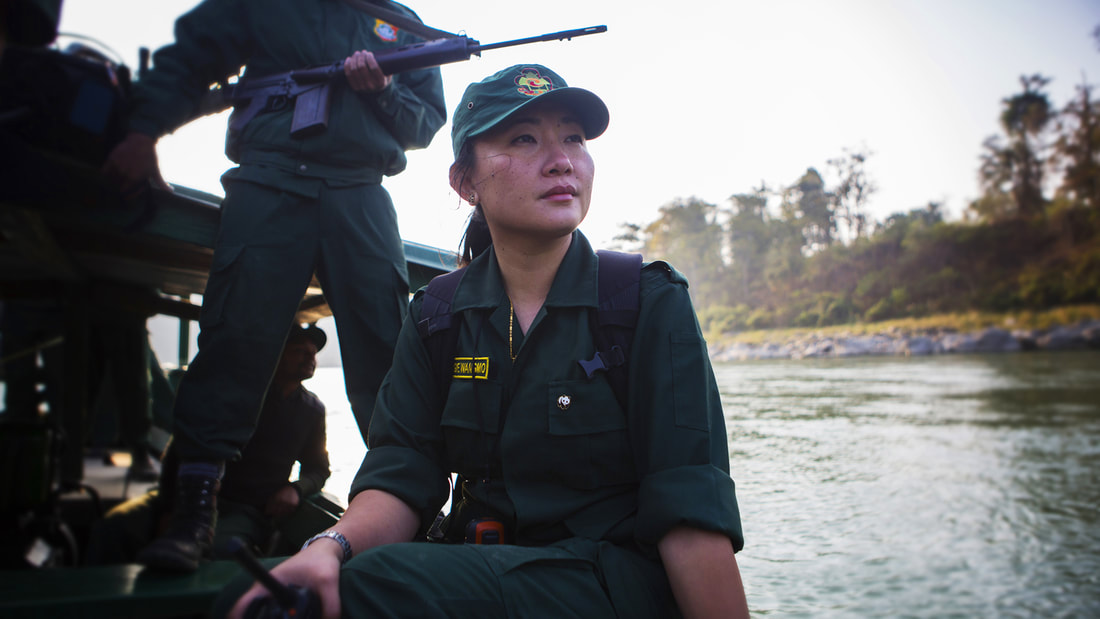
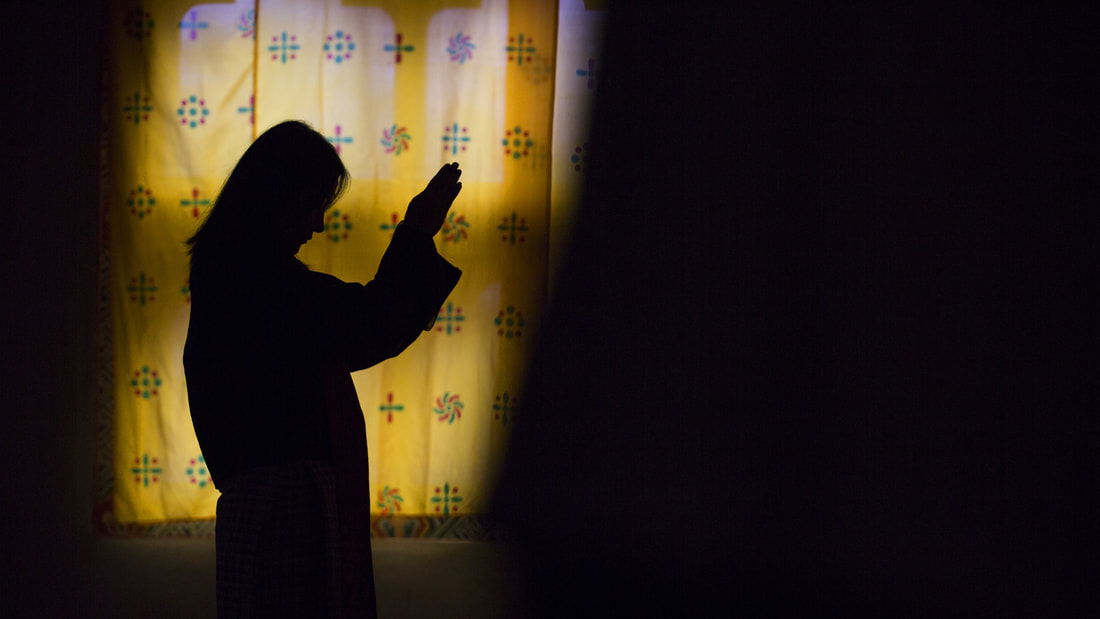
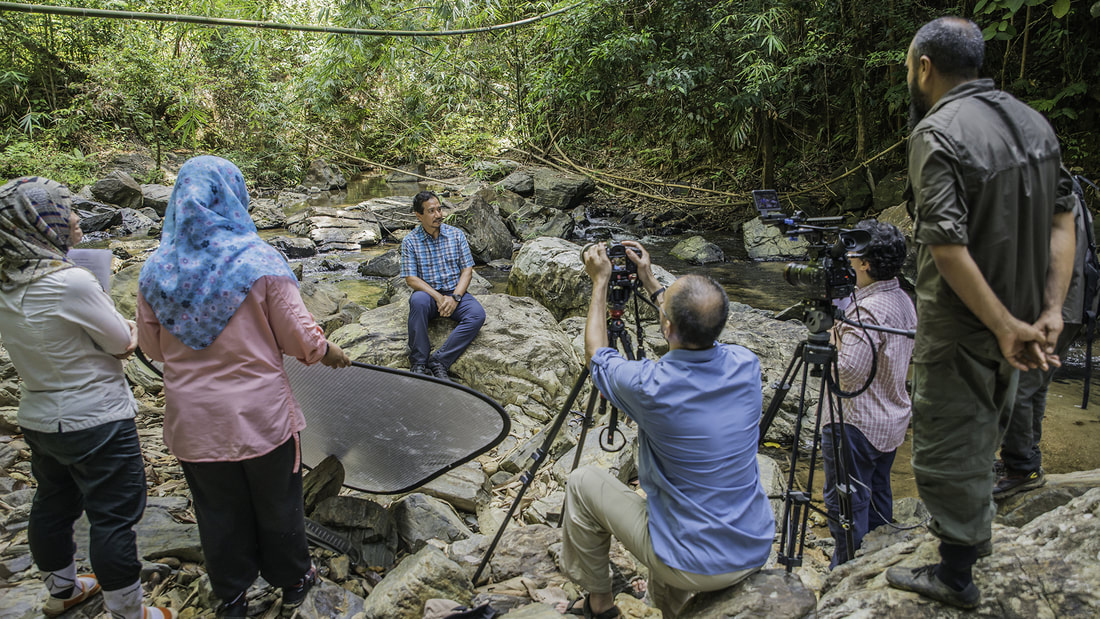
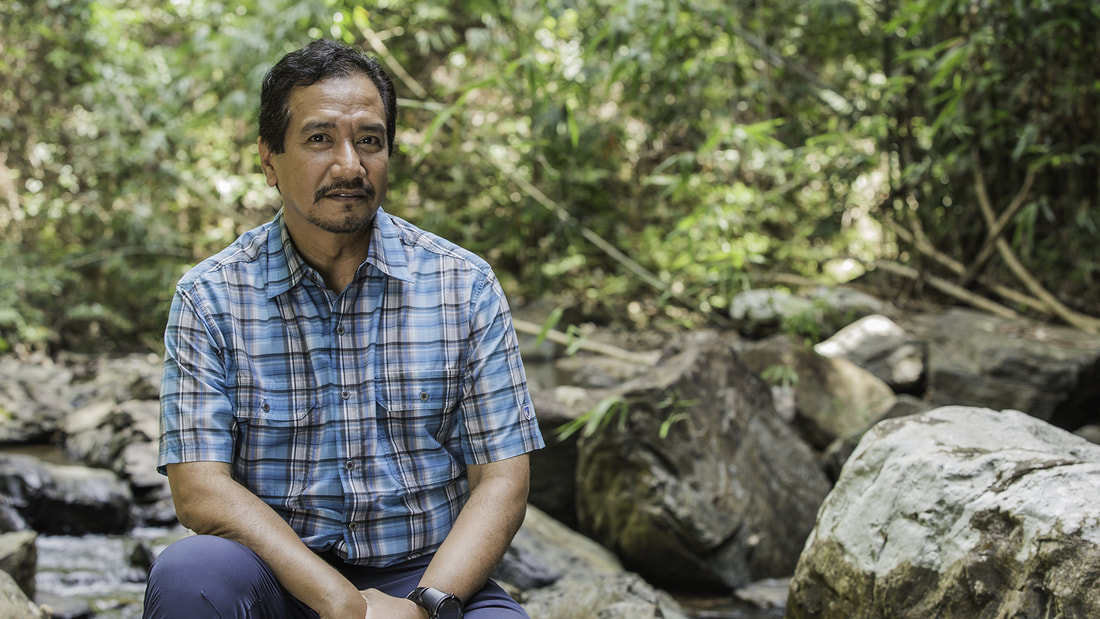
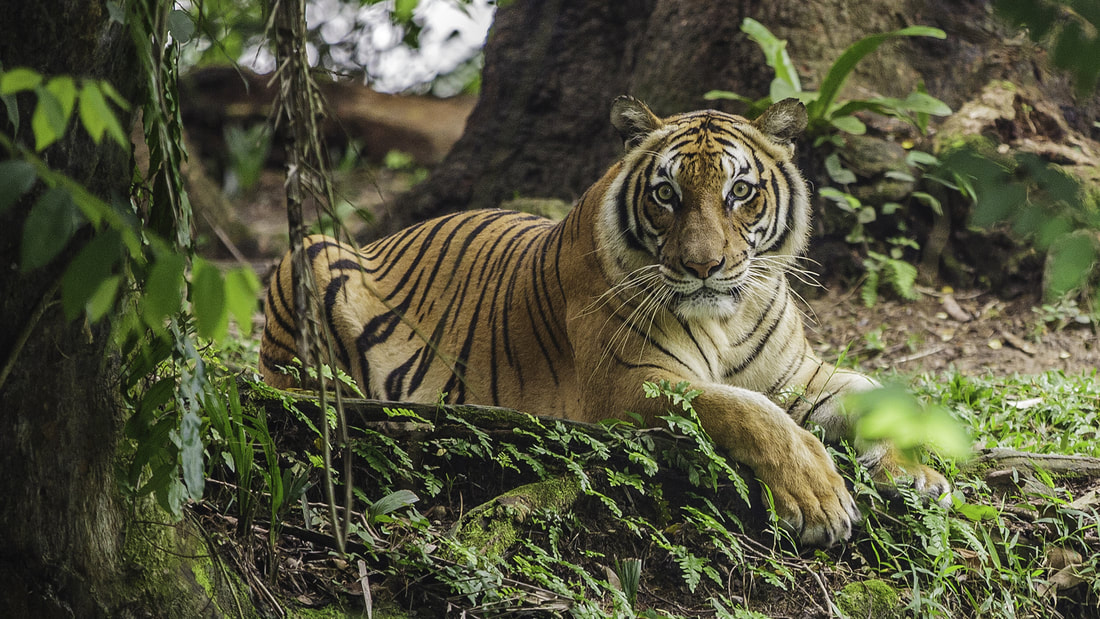
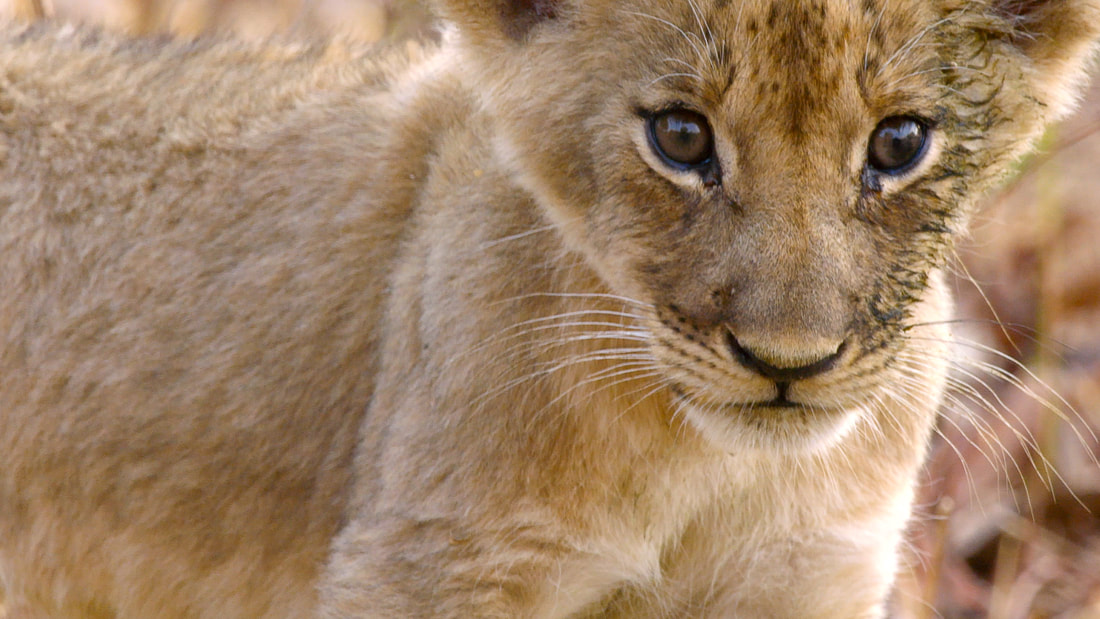
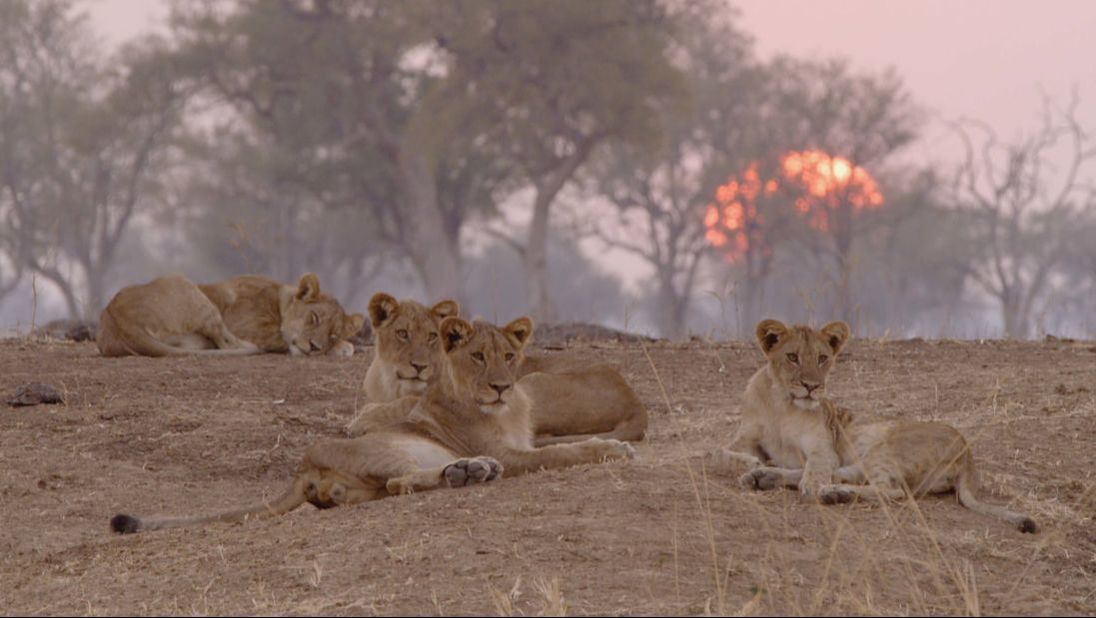
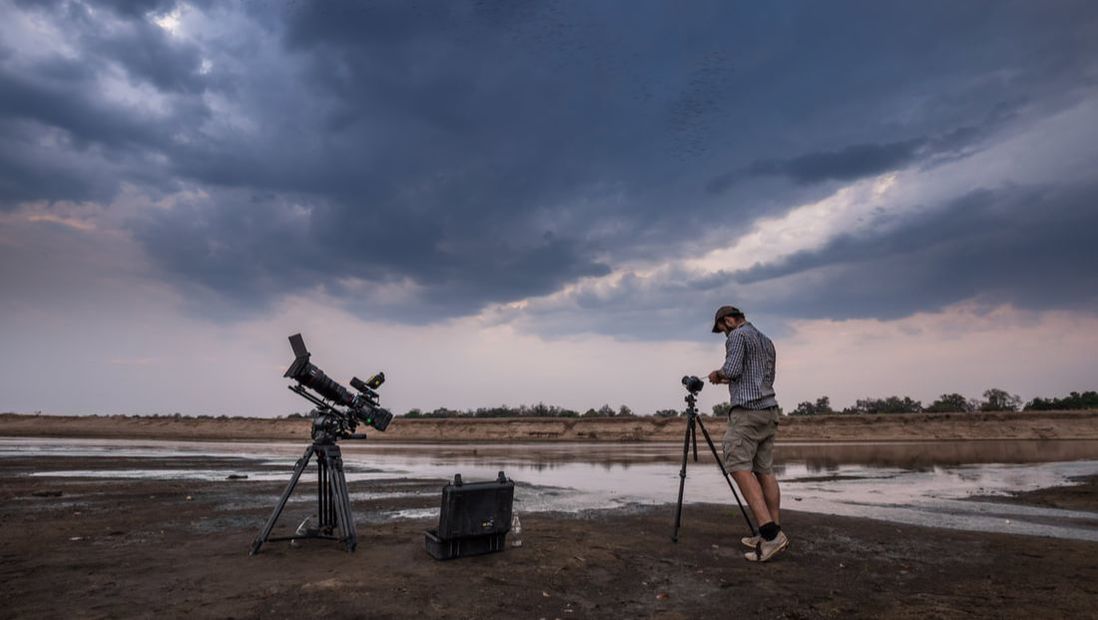
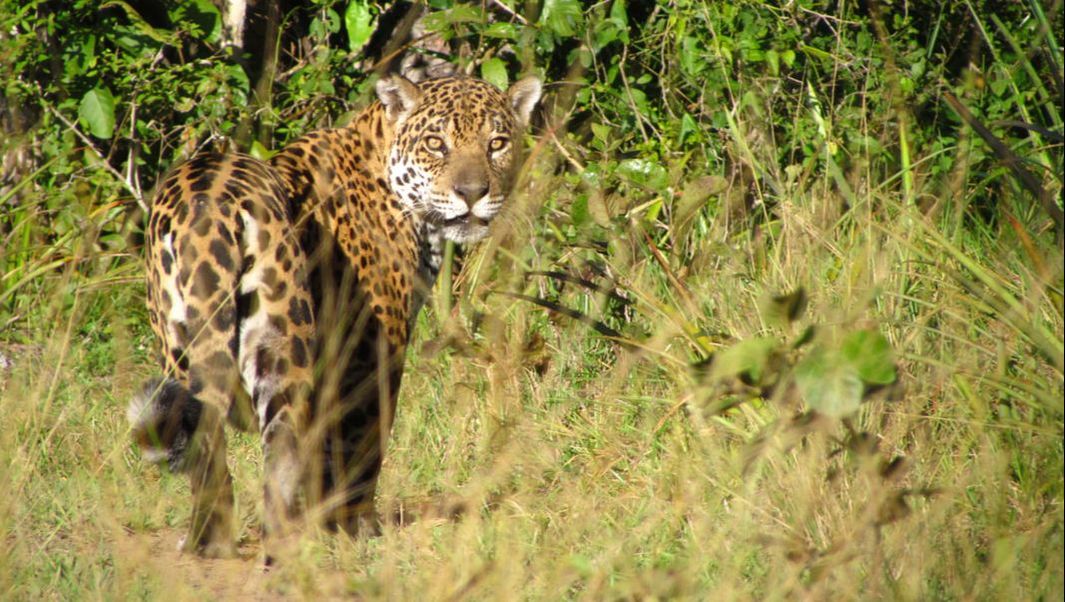
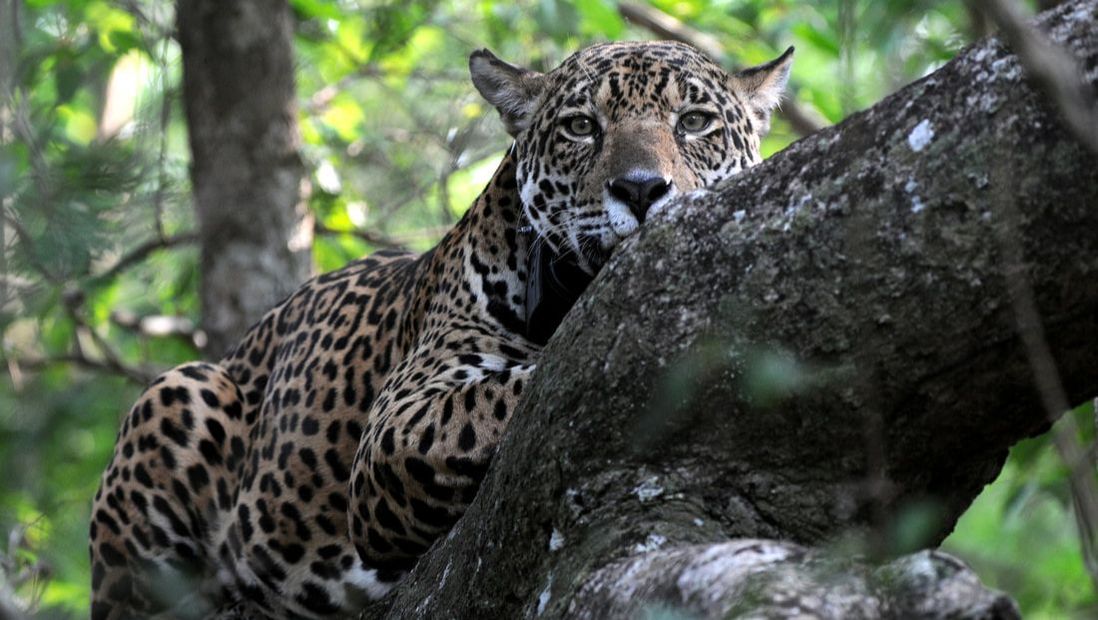
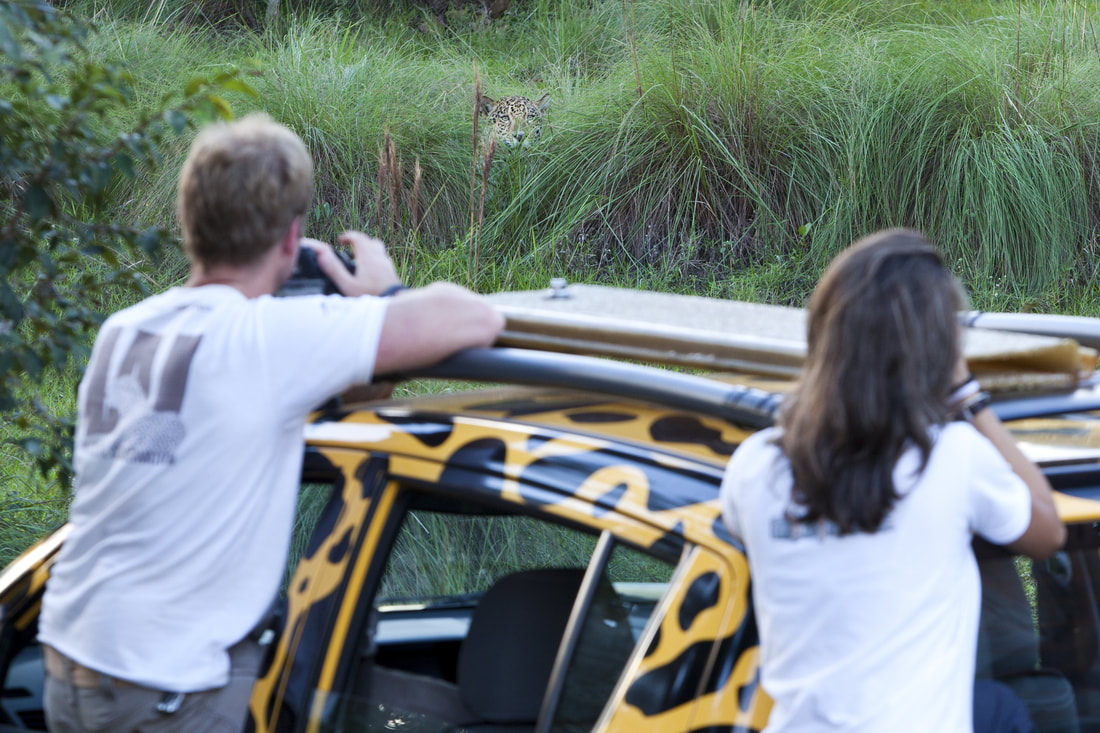
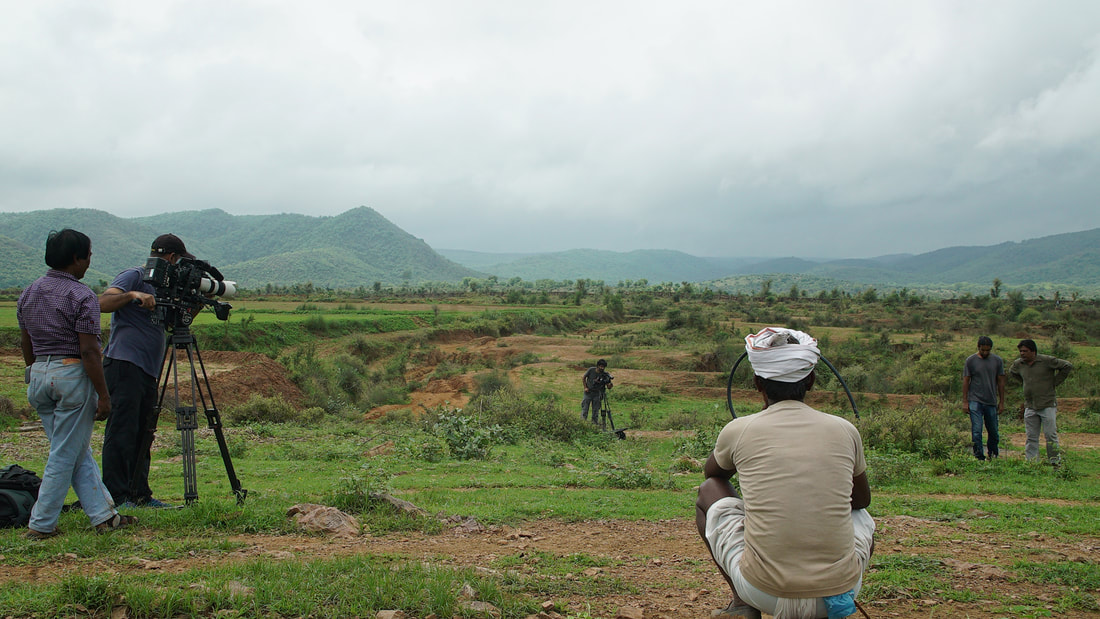
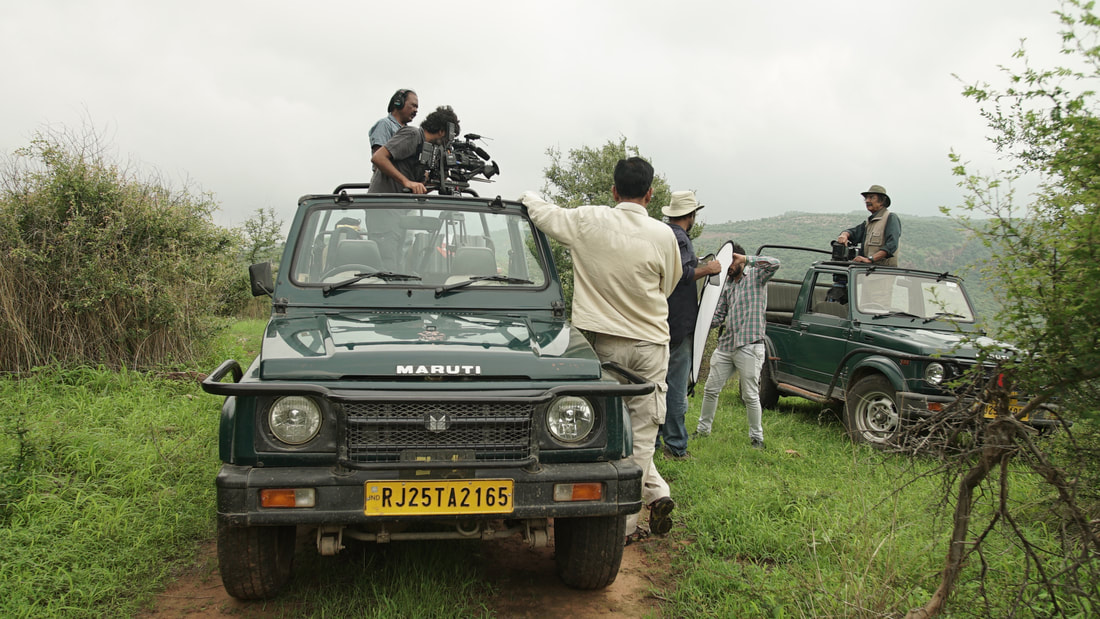
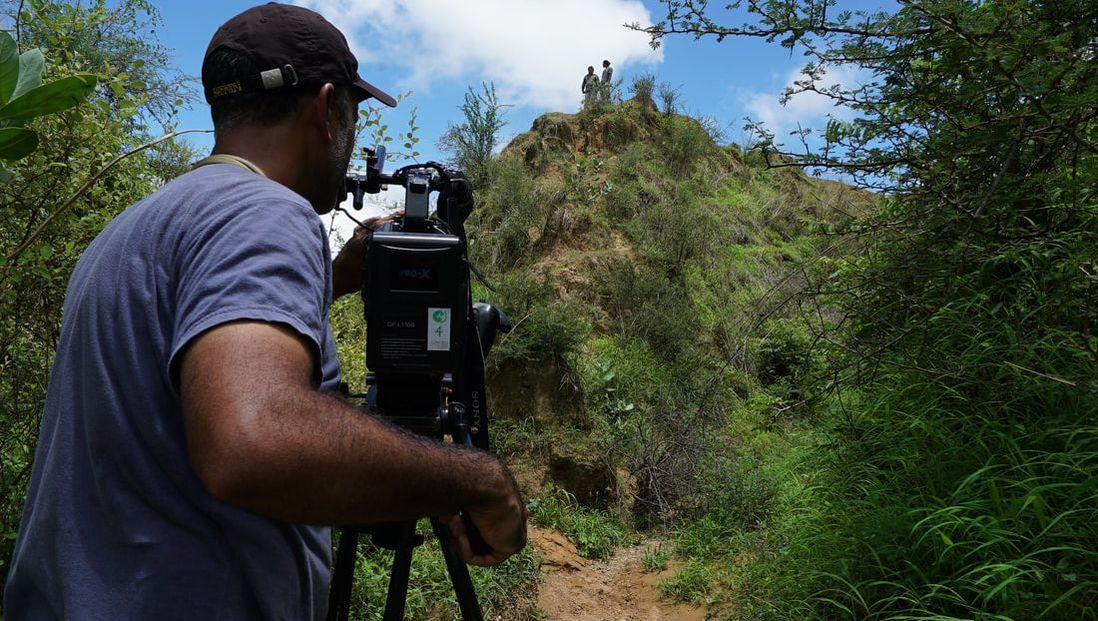
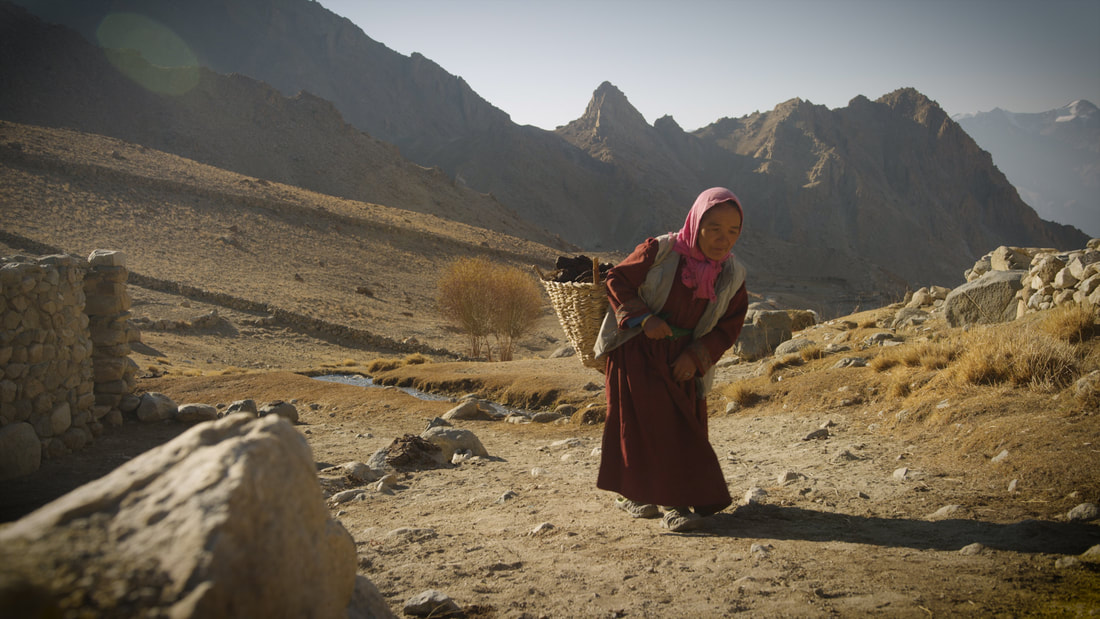
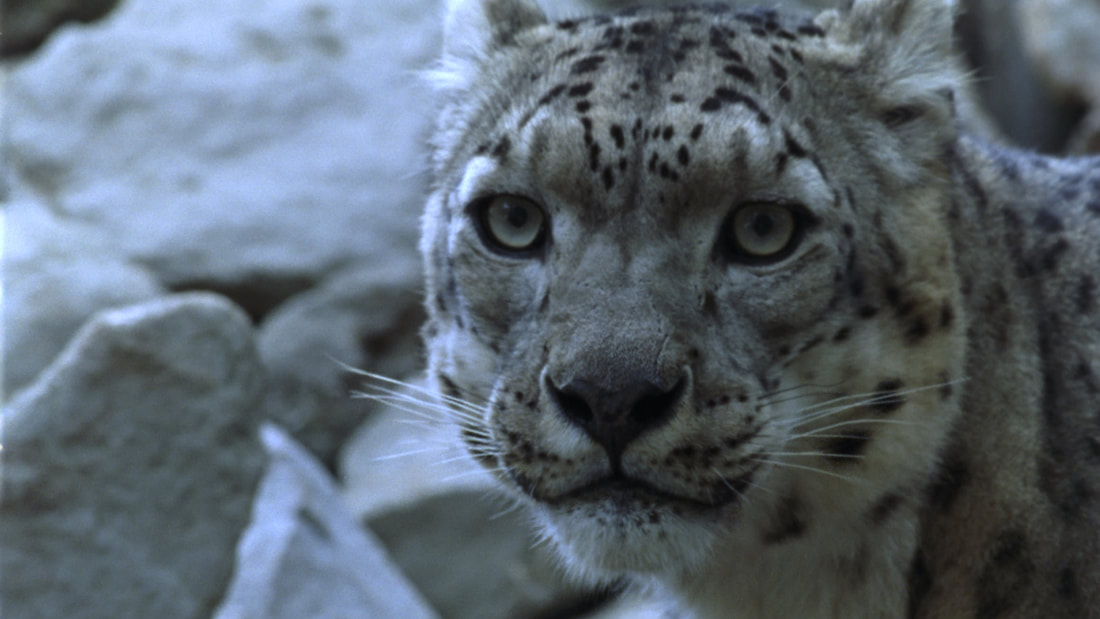
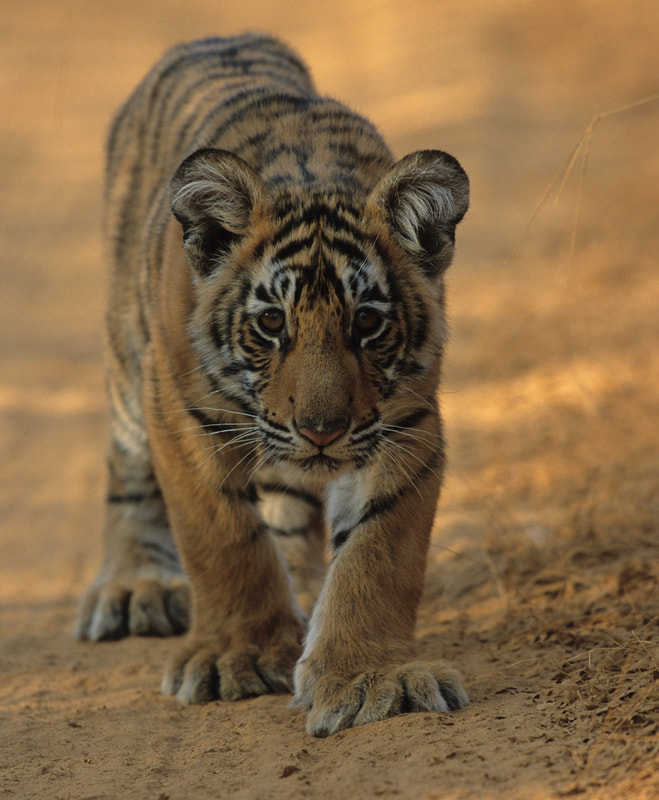
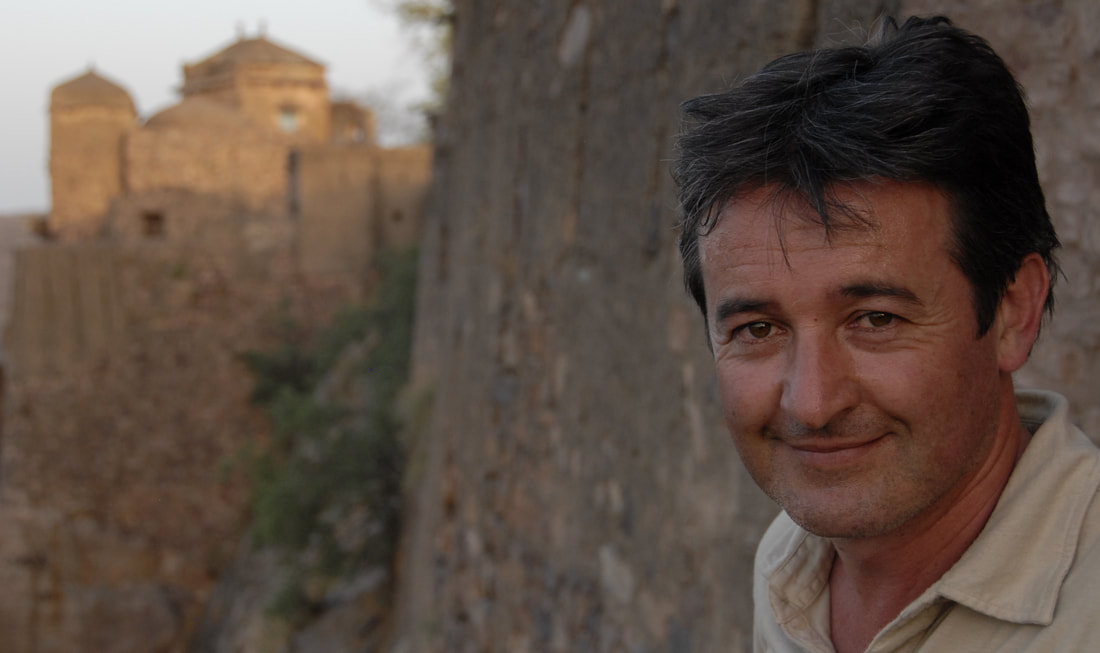
 RSS Feed
RSS Feed